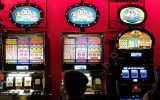Classic fire suppression compounds may be useful in preventing fires, but they also contain many environmentally-unfriendly chemicals. As with everything else in the modern world, however, technology marches on. In 2020, many modern systems use environmentally-friendly forms of fire suppression. For example, clean agent fire suppression systems release ultrafine particles of inert gasses that extinguish flames but don’t harm surrounding wildlife. If you want a green fire suppression system, look for products that possess the following features.
Efficient Use of Water
Most fire extinguishers use dry chemical agents these days, but some still rely on water to put out fires. Additionally, many sprinkler systems use water to help control the spread of a fire. When it comes to putting out flames, a little water can go a long way. That’s why some modern fire suppressions systems use a water mist delivery rather than using the many gallons of water that old-fashioned systems rely upon. When a water mist system activates, the water not only helps extinguish flames but absorbs heat, reducing the risk of the fire spreading. Sprinkler mist systems can be configured for different volumes and water pressure levels, allowing them to be customized for the needs of a particular building.
Gaseous Suppression Systems
Chemical foam is giving way to gaseous fire suppression in many products, such as the aforementioned clean agent fire systems. These systems use inert gases which reduce the oxygen levels around a fire, thus smothering it. In addition to using passive agents that do not contribute to climate change, the use of these gases is friendlier to the surrounding structure. You don’t have to worry about water damage or cleaning up chemical foam when utilizing one of these systems. This can also reduce the level of structural damage a building takes if you use the suppression agents quickly before the fire has much of a chance to spread. If a gaseous suppression system interests you, speak with a professional to see what will work best for your home or office area.
LEED Certification
LEED stands for Leadership in Energy and Environmental Design. They are an internationally-recognized building certification system, and they include fire suppression in their analysis of a building. Their inspection of fire suppression systems includes making sure that the system doesn’t use too much water, that any inert gases used are environmentally friendly, and that the carbon footprint used by a given system remains mostly neutral. Many products bear a symbol indicating that they are a LEED-certified fire suppression system. If you want to make sure that your system remains as environmentally friendly as possible, look for this certification.
The best part of environmentally friendly fire suppression systems is that they are often more efficient and effective than traditional extinguishers or sprinklers. Keep the above fire control solutions in mind when you begin working on your next home or office project. A focus on environmental friendliness can help protect you better and can also make sure that the world we live in is a cleaner place.


